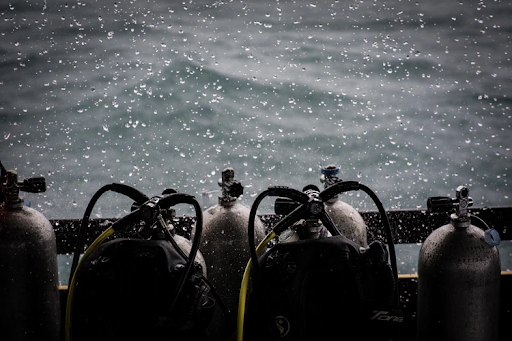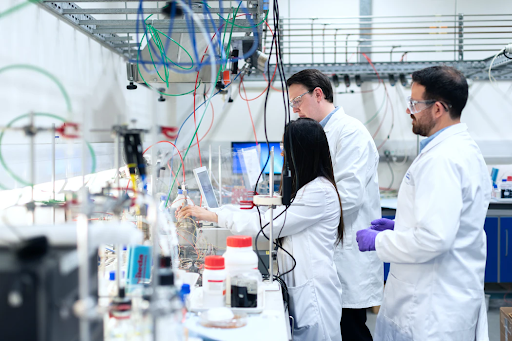Oxygen is one of the most basic naturally occurring chemical elements. It is a colorless gas found in the earth’s atmosphere in its most basic form. It is one among the Earth’s life-sustaining elements, and all species require it. Oxygen is helpful in a variety of industrial, commercial, medical, and scientific settings. Let’s take a look at a complete guide to industrial oxygen generation.
It is a key component in the synthesis of numerous synthetic compounds, including ammonia, alcohols, and various polymers, and is used in blast furnaces to make steel. Combustion of oxygen and acetylene produces the extremely high temperatures required for welding and metal cutting.
When oxygen is cooled to -297° F (-183° C), it transforms into a pale blue liquid that can be utilized as rocket fuel.
Table of Contents
Oxygen Generator
An oxygen generator is a device that uses Pressure Swing Adsorption (PSA), a type of selective adsorptive technique, to separate oxygen from compressed air. With 21% oxygen and 78 percent nitrogen, the compressed air utilized in the oxygen generation process is identical to ambient environmental air.
The oxygen in compressed air passes through a zeolite molecular sieve, which traps nitrogen and produces high-purity oxygen at the gas production outlets. This process will be discussed in detail later in this article.
Having a good quality zeolite for oxygen concentrator with high adsorption capacity is very essential to make the process more effective. Hence, to obtain better results, one should invest some money in these components.
With the advancement in technology, Oxygen concentrators were also used at home due to the Covid-19 pandemic.
Raw Materials Used in Oxygen Manufacturing
Oxygen can be made from a variety of materials and is manufactured in a variety of ways. Photosynthesis is the most common natural mechanism, in which plants utilize sunlight to transform carbon dioxide in the air into oxygen. This is opposite to the process by which animals transform oxygen in the air into carbon dioxide during respiration.
Separation of air using either a cryogenic distillation process or a vacuum swing adsorption technique is the most popular commercial method for creating oxygen. The separation of nitrogen and argon from the air is another common process.
Oxygen can also be created as a gas with the help of a chemical reaction in which oxygen is liberated from a chemical component. On submarines, aircraft, and spacecraft, this technology is utilized to generate small amounts of oxygen for life support.

Industrial Processes for Oxygen Generation
High-purity industrial gas separation technique is based on critical separation phases that require a special molecular filter. The filter is essential for producing oxygen from air by adsorption of air components.
Industrial processes like glass production for uses like glass bottles, glass equipment, steel production, and wastewater treatment facilities require a constant and secure supply of pure oxygen. Following are some ways to generate oxygen using industrial processes:
1. Cryogenic Separation
Air Separation Units (ASUs) are employed in many oxygen generation operations. In this process, air is separated into its basic components; oxygen, nitrogen, and other minor gases like argon. This is done by passing pure air through a molecular filter to remove carbon dioxide, water, nitrous oxide, and small hydrocarbons.
Airstream obtained is then passed into a box kept at cryogenic temperatures to divide the remaining components into ultra-pure forms of oxygen, nitrogen, argon, and other noble gases.
2. Pressure Swing Adsorption
This is another technique of oxygen production in the industry. PSA technology takes advantage of the air’s affinity for the molecular sieve when it’s under pressure. The pressure is increased in PSA oxygen generation to the point where the nitrogen affinity for the molecular sieve is significantly larger than that of oxygen.
The nitrogen is absorbed by the molecular sieve, leaving an oxygen-rich stream of air with a purity of up to 95%. The pressure is then reduced to efficiently release the nitrogen and rebuild the bed, allowing the procedure to be repeated.
3. Vacuum Pressure Swing Adsorption (VPSA)
Vacuum swing adsorption uses the same technology but instead of atmospheric pressure, it uses vacuum pressure generated by a vacuum blower. By utilizing the whole isotherm curve for the lithium molecular filter, the vacuum swing enables maximum adsorption and desorption.
Production plants, skid-mounted equipment, and medicinal oxygen units all use the VPSA method. When compared to ASU and PSA, it provides purer oxygen with a small footprint and lowers power consumption.
Oxygen Purification
At the bottom of the low-pressure column, the oxygen is 99.5 percent pure. Newer cryogenic distillation systems are designed to extract more argon from the low-pressure column, resulting in oxygen purity of around 99.8%.
To achieve higher purity, more than one additional fractionating column can be added to the low-pressure column. This will refine the oxygen product further.
Future Scope
The satellites are constantly being launched to detect water on the moon and other planets. These spacecraft survey the planet’s surface for signs of water. Scientists believe that if enough water is discovered, it can be electrolyzed to produce hydrogen and oxygen gases, with the electricity generated by solar power.
The oxygen might be utilized to provide life support for further settlements and colonization, while the hydrogen could be used as a fuel. Another proposal involves utilizing a solar-powered furnace to extract oxygen from chemical molecules in lunar soil.
High purity oxygen is also in high demand in modern industrial manufacturing for a variety of purposes.
Conclusion
This article explored some of the industrial processes for oxygen generation and discussed the applications and scope of these processes. With access to a specialized oxygen generator, obtaining the requisite quantities of oxygen gas can be made more cost-effective.




